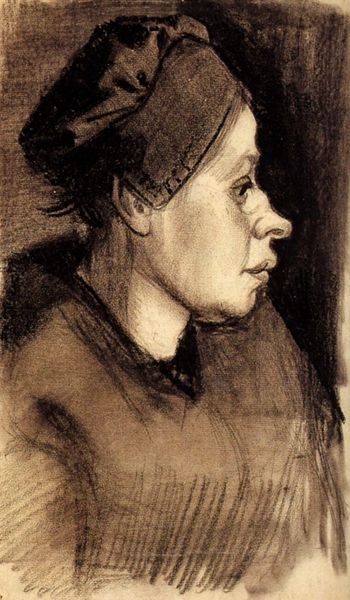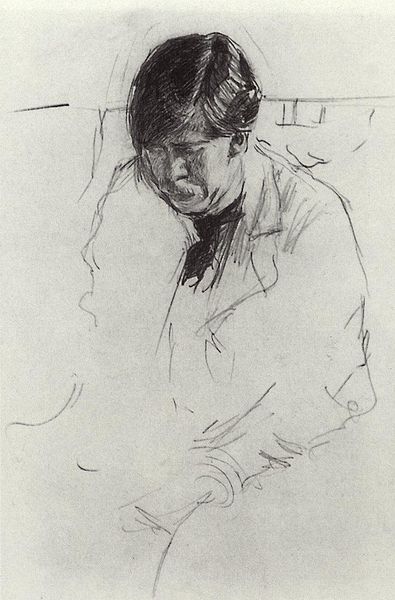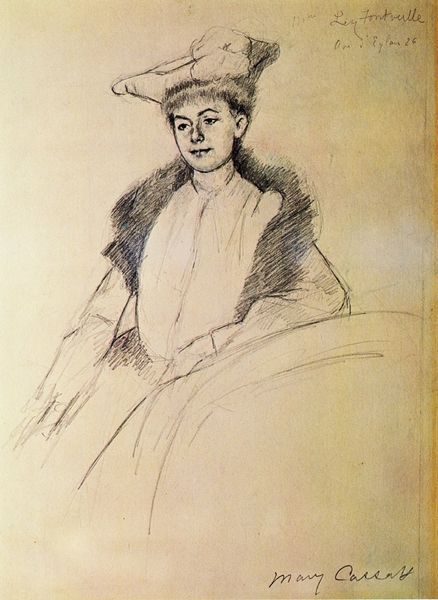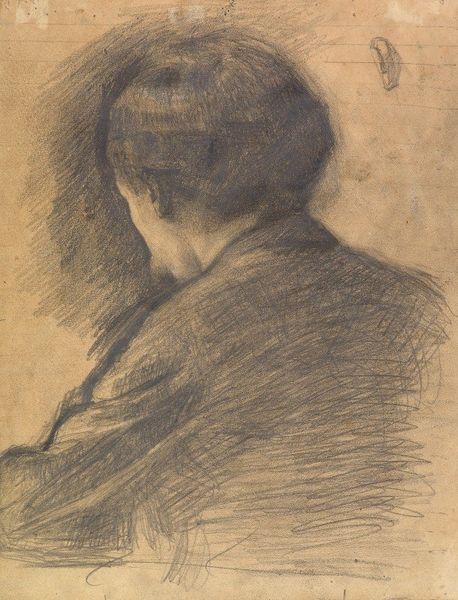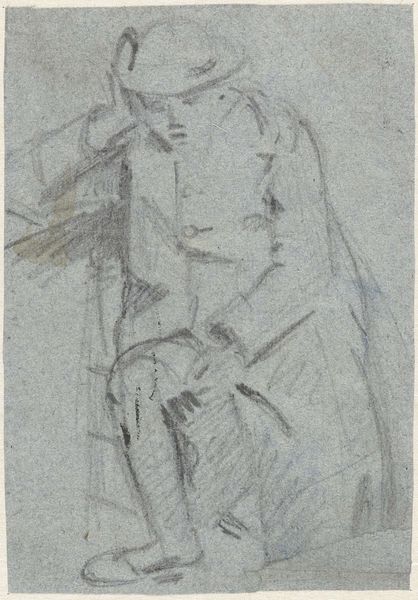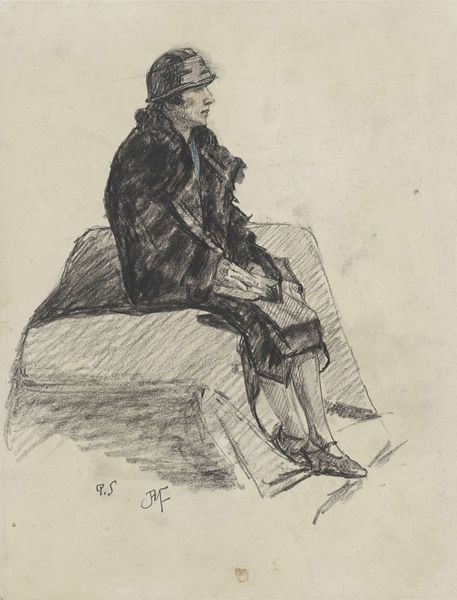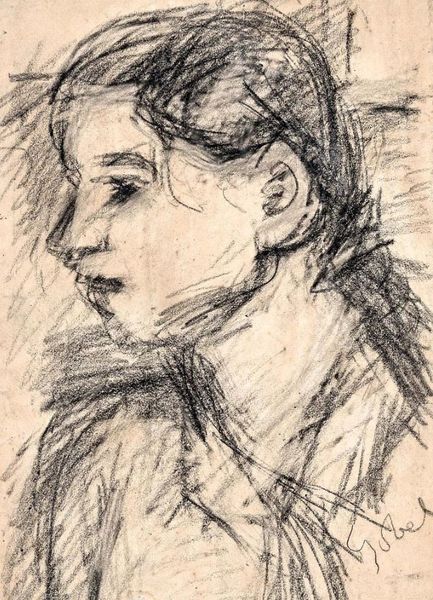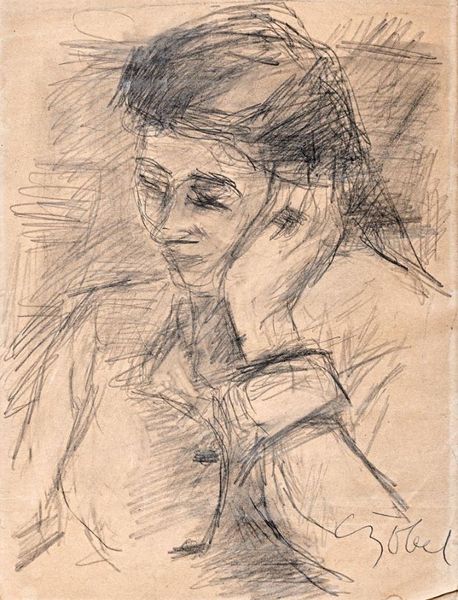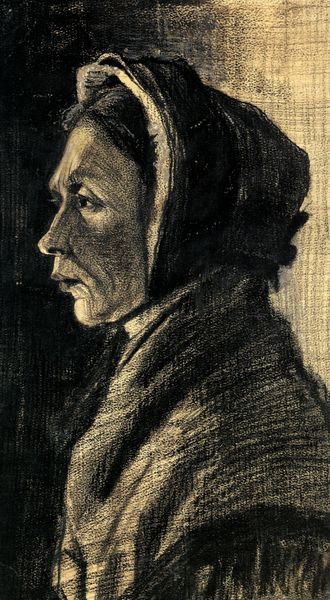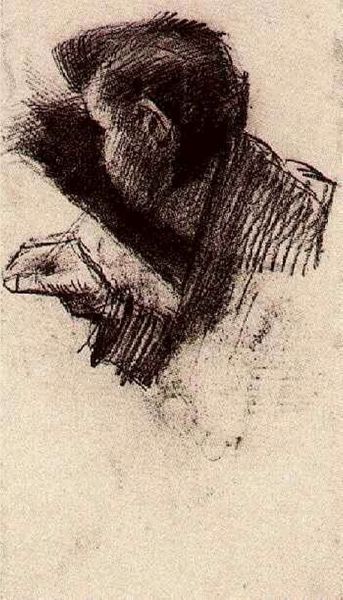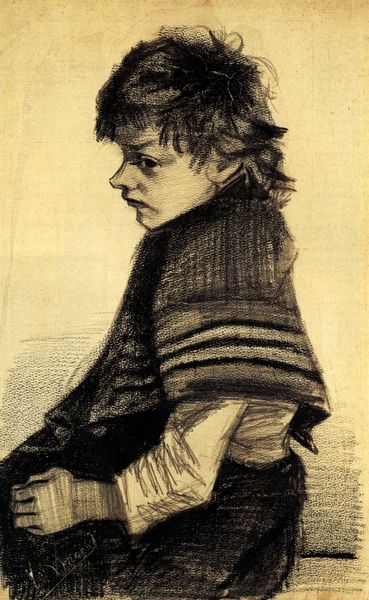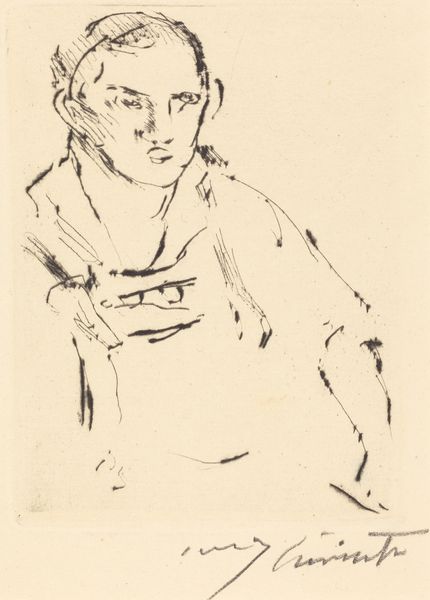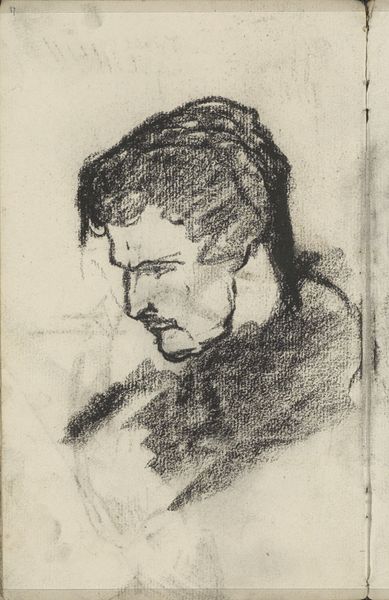
Copyright: Public domain
Curator: We're looking at Edgar Degas' "Woman Tying the Ribbons of Her Hat," created in 1882 using charcoal. A rather striking work on paper, wouldn’t you say? Editor: My first thought is the charcoal seems almost sculptural here; the density feels incredibly material, especially in contrast to the subject's delicate action. I'm also quite intrigued by the brown paper as ground. Curator: Indeed. Notice how Degas leverages the materiality of charcoal – its capacity for creating subtle gradations of light and shadow to define form. The work oscillates between line and mass, abstraction and figuration. There's a deliberate avoidance of crisp, delineating lines; edges dissolve and coalesce. Editor: Precisely! You see the smudging technique he uses makes it difficult to perceive the class status of this woman, even her role. Also the drawing itself feels inherently process-oriented. The mark-making becomes integral, calling attention to its making, how the paper and charcoal function. It feels contemporary in this regard. How do the formal qualities you mentioned mirror aspects of modern life during the late 19th century? Curator: Ah, excellent point. The fracturing of form and the emphasis on fleeting moments can be read as a reflection of the dynamism of modern Paris. This preoccupation with movement extends from his ballet dancers to studies of everyday women. Moreover, observe the formal device of cropping, the focus is not just on her face and figure, which echoes his interest in photography. Degas uses it as an aesthetic method in the face of evolving technology to question the position of visual arts in a quickly evolving and industrialized society. Editor: The fact that the background is just raw brown paper gives it this immediacy – the drawing has a wonderful, sketchy quality. Perhaps by emphasizing materials, Degas elevated his drawing as he also explored the means of modern art production during that era? Curator: Absolutely. His investigation, while embracing technological advances, invites us to also re-examine the very essence and intrinsic qualities of art in relation to its medium and material foundation. Editor: A perspective that makes us ponder the labor that goes into an image before industrialization. I now find the seemingly rough strokes actually make this a thought-provoking study of both class and modernity. Curator: I concur entirely, and thinking through materiality offers us a rich interpretation on modern subjects captured using classical art form.
Comments
No comments
Be the first to comment and join the conversation on the ultimate creative platform.

